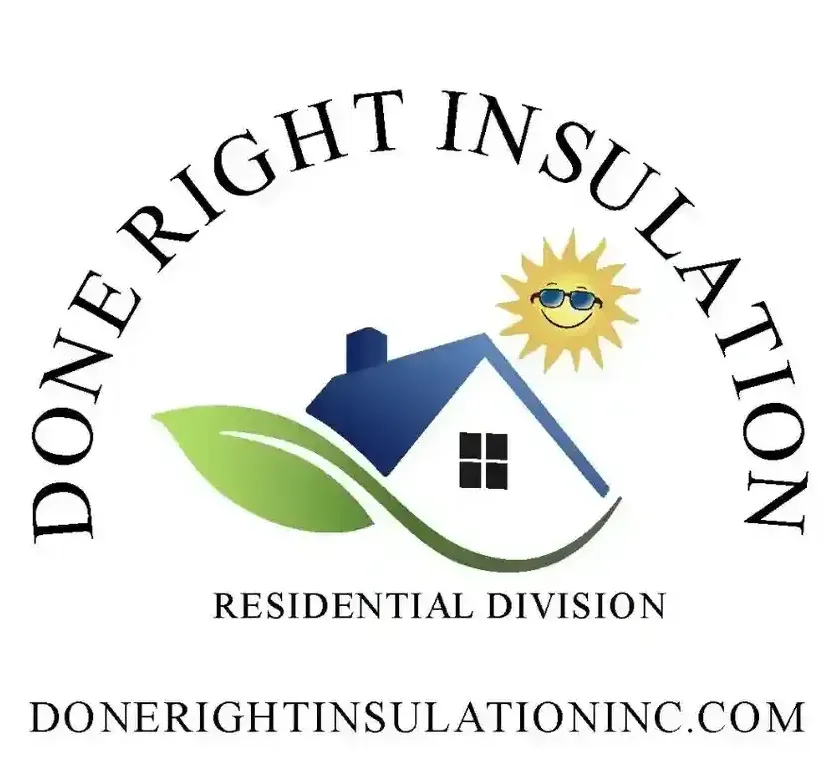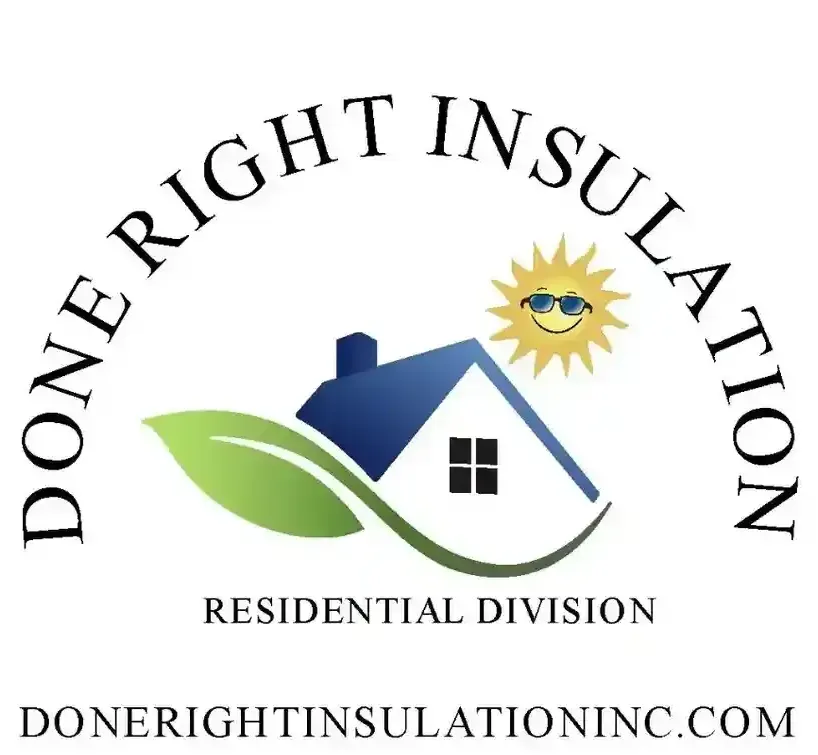FAQs
Done Right Insulation Inc.
Have an insulation-related question? Done Right Insulation Inc. has the answer. Check out these FAQs and reach out to us today for more information!
-
What is the difference between cellulose and fiberglass blow-in insulation?
Cellulose and fiberglass are both widely used options for blow-in insulation, each with distinct characteristics regarding material composition, performance, and environmental effects.
- Material composition: Cellulose insulation is derived from recycled paper products, primarily newspapers, and is treated for fire resistance. In contrast, fiberglass is composed of fine glass fibers created from molten glass and sand.
- Thermal efficiency: While both types provide adequate insulation, cellulose generally offers a slightly higher R-value (a measure of resistance to heat flow) per inch, enhancing energy efficiency.
- Sound insulation: Due to its greater density, cellulose provides superior soundproofing capabilities compared to fiberglass, effectively minimizing noise.
- Moisture resistance: Fiberglass possesses natural moisture resistance, reducing the likelihood of mold development in moist environments. Conversely, cellulose can absorb moisture more readily, which may lead to mold issues if not properly installed.
- Environmental considerations: Cellulose is recognized for its eco-friendliness, attributed to its substantial recycled content. Fiberglass, while also recyclable, contains a lower percentage of recycled materials.
Both cellulose and fiberglass are effective choices for insulating attics and walls. The decision often rests on the specific needs of the home, budget constraints, and environmental impact considerations.
-
What is the difference between insulation factor R-30 and R-38?
The difference between R-30 and R-38 insulation is significant, primarily due to their R-values, which quantify thermal resistance. R-38 insulation definitively outperforms R-30, offering superior protection against heat flow.
Here’s a clear comparison:
- R-30: This insulation provides moderate thermal resistance, making it suitable for warmer climates or areas where extreme insulation is not necessary, such as floors or certain attic spaces.
- R-38: This insulation delivers exceptional thermal resistance and is strongly recommended for attics and colder climates. It effectively maintains indoor temperatures and ensures maximum comfort.
In conclusion, R-38 is indisputably more effective than R-30 at retaining heat during the winter and blocking unwanted heat during the summer. Investing in R-38 insulation will significantly enhance your home’s energy efficiency and lower your heating and cooling costs.
-
How do I know when my insulation needs to be replaced?
You must replace your insulation if you observe any of the following signs:
- Higher energy bills: A noticeable increase in your heating or cooling costs signals that your insulation is failing to regulate indoor temperatures effectively.
- Uncomfortable indoor temperatures: If you experience drafty areas, hot or cold spots, or rooms that never reach a comfortable temperature, it's clear that insulation issues are present.
- Moisture or mold: The presence of mold or dampness shows that your insulation is trapping moisture, posing a risk of mold growth and significantly reducing its effectiveness.
- Pest infestations: Discovering signs of rodents or pests in your attic or walls indicates damaged insulation that needs immediate replacement.
- Aging or compressed insulation: Old or compressed insulation loses its ability to perform over time and must be upgraded to ensure optimal effectiveness.
Actively monitoring these signs will help you maintain a comfortable and energy-efficient home throughout the year. Don't delay in addressing insulation issues—they're critical for your home's performance.
-
What are the benefits of having my insulation redone?
Redoing your insulation is a smart choice that brings significant advantages:
- Improved energy efficiency: upgrading to new insulation drastically reduces heat transfer, ensuring consistent indoor temperatures and slashing your heating and cooling costs.
- Enhanced comfort: superior insulation eliminates drafts and prevents hot or cold spots, guaranteeing that every room maintains a comfortable temperature all year round.
- Better indoor air quality: replacing outdated insulation is essential for reducing allergens, mold, and dust, leading to a healthier living environment.
- Increased home value: new insulation is a highly attractive feature for potential buyers, and it adds substantial value to your property.
- Reduced environmental impact: by improving insulation, you significantly lower your energy consumption and make a positive impact on your home’s carbon footprint.
- Noise reduction: quality insulation effectively dampens outdoor noise, resulting in a quieter and more serene indoor environment.
Investing in your insulation is not just beneficial; it’s a necessary step for long-term savings and supreme comfort in your home.
Learn More About
Done Right Insulation Inc.
Serving the Polk and Hillsborough counties area. Done Right Insulation Inc specializes in insulation removal and blow-in insulation. One-year manufacturer warranty. Carrying liability insurance. Quick availability. Contact us today.
serving Area
Polk County, FL
Hillsborough County, FL
Business Hours
- Mon - Fri
- -
- Saturday
- -
- Sunday
- Closed


Share On: